Podcast: Play in new window | Download

How to create a prairie garden – Show Notes
Creating a prairie garden
A prairie garden, meadow garden, wildflower garden – whatever you want to call it – is a beautiful ecological landscaping to provide healthy native plant habitat in your yard in a beautiful low maintenance way. In this episode we discuss what is a prairie garden and how to install a prairie garden from start to finish.
Today’s links: ely.how/episode107
- Mega Low Maintenance Plants for the Midwest list
- Easy plants – simple list to get started
- The Prairie Nursery in Wisconsin
- The PollenNation nursery
- How to start a new garden bed
- Ask Ben a Question for Free!
- Easy Living yards can help you create your beautiful yard, no matter your budget or location.
- Find me on Facebook, Instagram, or Pinterest
What is a prairie garden?
- A prairie garden is a beautiful low maintenance ecological landscape or native garden consisting of native grasses and native plants to provide beauty for humans and natural habitat for critters
- Prairie gardens are a low maintenance way to fill in space in your yard
- Prarie gardens provide beneficial habitat for native insects and birds
- You could call a prairie garden a pollinator garden or gardening for birds – especially if your neighbors would like that better!
Beauty in a prairie garden
- Depends on design style
- Provides visual interest in color, texture, and structure
- Translates wind into movement and sound
Common excuses about meadow gardens and prairie gardens
- “My landscape is too small for a prairie garden”
- “My HOA won’t allow a pollinator garden”
- “Native gardens are too ugly”
- Learn how to break through these myths!
How to install a prairie garden or pollinator garden
- Remove existing space (see “How to start a new garden bed” episode)
- Know your conditions
- Select the right plants
- Select your planting style
- Determine design criteria
- Install your prairie garden
- Maintain your beautiful native garden
You deserve a beautiful yard!
Easy Living Yards can help you create your beautiful eco-friendly yard.
See below to find the options right for you. Start today!
Prairie Gardening Ecological Landscaping ELY107
00:00:00 – 00:05:01
Welcome to the easy living yards podcast here you’ll learn how to create a beautiful eco-friendly yard. You can enjoy a beautiful space that makes our world a better place. I’m your host Ben Hale and I’m an ecological landscape designer and Beautiful Cincinnati Ohio. My goal is to make as many beautiful chemical-free purposeful landscapes in our world. So we can live better while helping the world around us. We. Cover topics from native plants, permaculture and ecological landscaping to organic gardening kid-friendly playscapes healthy outdoor play in living with purpose. Let’s jump in and create your beautiful space that makes our world a better. Welcome to another episode of easy living yards podcast. Today’s episode one, hundred seven, and we’re going to be talking about creating a meadow. Hope you guys are having an awesome summer this year. It’s a little bit of a crazy year, right? That’s the reality. Right. But let’s get past that and let’s just talk about the good things. Okay. It’s good to focus on some good stuff with all this negativity floating around these days I hope you’re happy. I hope you’re healthy. I hope you’re getting some good time with family. and. You know connecting digitally taking advantage of the wonderful technology we have to connect digitally these days and. More importantly is well getting outside and join the beautiful nature around US I. Hope Amidst all this stuff with our global pandemic situation that you’ve at least been able to really kind of slow down a bit and enjoy the natural world around us. I. Think that’s the beauty out of all of this at least for me that it’s really helped me to focus on just those you know those important things that we kind of pushed to the side a lot of times. So anyway. Okay guys before we jump into today’s show, I wanNA. Let you know about some awesome new services offering easy living yards, dot com slash services where you can find more details. What about what I’m about to tell you about and I’m super excited if you can’t tell and that is that easy living yards is opening up the doors beyond just our membership coaching program to really kind of give you a wide array of opportunities to work with us and when I say us I really mean me. Okay it’s one man shop here. A easy living yards I want I really want to help you guys navy against. So that’s where I started with the easy living yards membership, which is basically your diy landscaping coaching program and if and when I wanNA do is kind of broaden out beyond that. So in the past I’ve offered some consultation services and that Kinda shut the doors on that for a while and now I’m opening it backup. Alright. So Wherever you live. I offer digital services where we can connect one on one talk intimately about your landscape and how we can create that positive beautiful lasting landscape that makes a lasting impression on the world around us in his beautiful in our is it’s well. Okay. So the consultation consultation services are when you need specific help or you don’t know where to start and you just want kind of that nudge or direction or clarification on some things, and there’s various options there to to work you know on a kind of a higher level with some. Consultation or some deeper level where we kind of work through project together. Okay. So check out the consultation services, I offer virtual consultation where we can. You know I’ll I’ll pull all the resources together. We talk over photos we do video. Conferencing where we can you actually physically walk through your landscape through your computer screen It’s it’s pretty cool stuff. So it’s awesome. The tools we have at our disposal these days to to stay connected wherever we live. Okay I’m also offering virtual design services to the cool thing about with our hyper connected world is I can basically almost all the resources we. Need to pull together pretty awesome. Design Capabilities straight through the computer screen. Okay. So this is where I am. You know I wanNA make wherever you are as accessible as possible to help you on your journey to create that beautiful space that makes a wrote a better place. Now, if you’re one of those super lucky people that lives in the Greater Cincinnati region. Like me Then I’m also offering a in person services as well, which is super cool I’m super excited about this guy’s to start working with you guys that live in the Greater Cincinnati region So wherever you live, if you think it’s close enough you might be you probably are so also offering a boots on the ground consultation services where we can walk through your landscape and get an intimate feel for it and discussing onsite and work through whatever challenges dealing with or whatever level of overwhelming you’re dealing with to get you started on your way I’m also offering. full-scale design services in the Greater Cincinnati region.
00:05:01 – 00:10:00
I’m super excited about this park guys. This has been part of my long-term vision. So I’m super excited to to start carving out that space to work on design It’s I’m super passionate about this and I can’t be more excited to start working with you. So if you’re interested definitely go over to easy living yards, dot com slash services to check out the various options there as always I’ll continue to keep the easy living yards membership open and will continue to be working in the easy living yards membership. Right now, I want to thank my members Jen Caitlin for their awesome work in the membership and. Guys I have to members, and so there’s plenty of room for more of you and the cool thing is with such a small membership I. Give I can give you guys super super detailed help. And maximize you know the time that we have together in the membership. It’s incredibly affordable guys So there’s also a link on that on the new services page now who is Who is who is the right person for working with easy living arts? Okay. Let’s get that out there. If if any of these areas feel right to you than you are the right connection because we’re not just your typical Moen blow, you know throwing a bunch of boxwoods type landscaper. I am super driven to provide a positive lasting impact on the world through the landscapes we live and I strongly believe this is the place where we can really make a positive lasting impact. Okay. and. So I’ve kind of broken out my focus areas into three buckets and you’ve heard me talk about him the shows here. So this is the land life and health. Okay. So when we’re talking about land, it’s basically this overarching bucket of land restoration in a beautiful manner. Okay. So whether it’s ecological design, native landscaping Rain Gardens or rain water management systems low maintenance, lawns, organic landscaping. These are my focus areas for for stewarding the land through beautiful landscapes. Okay. Life this is providing life in vibrance to our landscapes beyond the human aspect. So we’re talking about pollinator gardens, butterfly, gardens habitat restoration bird friendly landscaping. Okay. These are kind of just some examples of the types of. Work I really wanted to with you and then health very important. So this is kind of where we integrate the human element more directly and that’s permaculture systems and regenerative agriculture on the home scale. Healthy, food kinda ties into that right healthy food production, rainwater collection for for either irrigation or drinking water. Right and so I don’t do as much with the drinking water piece but rainwater collection is very important in our landscapes. Okay. Healthy playscapes as well as really important. So this is basically healthy fostering healthy childhood through our land. Okay. This is super important because childhood and healthy connections to the lands for children fosters people that care about the earth and appreciate the earth and and become the future stewards of our planet. So. Super important stuff and I care about all this stuff very deeply. So if you do to then consider working with easy living yards, go over to easy living yards, dot com slash services to to find out more okay. Enough about that. Let’s just talk about the topic of today’s show now. Today. We’re GONNA be talking about creating a meadow. Why are we talking about this right? Around here in southern Ohio at least. You know if you think about a meadow, you might just think of like an empty lot or something somebody’s overgrown lawn. Well, that’s not exactly what a meadow is. So we’re not going to be talking about that. All right. This isn’t just some you know abandoned space or talking about is creating a beautiful space that. For one takes up space. All right. It’s low maintenance. It’s a space filler but more importantly than that. This is a beautiful wonderful habitat for the creatures that that can potentially live in your landscape. These are good creatures to we want creatures in our landscape, things like butterflies, things like bees that won’t sting you and. Birds Beautiful Birds Gold finches. Stuff like this red wing blackbirds. Okay. This. Is Part of creating a beautiful maintenance landscape. Meadow. I use the term loosely. We could call it a wild ish space and naturalized space and nature inspired space. A prairie many prairie. There’s a kind of a buzzword right now called pocket prairies. This is like a pocket prairie. Okay. So We’re not going to get you know into semantics about what’s the difference student prairie and a meadow. Practically speaking, there’s not enough of a difference to worry about unless you’re botanist.
00:10:00 – 00:15:00
Okay. So Here, we’re talking about something that’s going to be a beautiful low maintenance landscape. It fills space it’s going to provide beneficial habitat. We want that rate we want our pollinators to be happy we want them in our space to enjoy. We want some birds coming around right to visit. Well, this is all stuff that these creatures enjoy. It provides visual and textual interests from an artistic standpoint. This is also valuable. Okay. One other really cool thing about this most garden features as well is this is an awesome way to translate. Wind into movement and sound, and that’s really important. Especially in those times of year when when you know the garden isn’t popping with color is not full of you know these these flamboyant colors of flowers and everything. Well, movement and sound are in texture are awesome elements to incorporate into your landscaping yard for artistic effect. Okay and into really bring interest into your landscape in those months where we don’t have the colors to carry us through so. This is what I’m talking about with when I’m talking about creating a meadow we want to bring this positive stuff into our landscape. Now, of course, we need to do this in a way. That integrates well with our landscape. As well as our neighborhood and the people that live around us. Quite often. Go. Forward and trying to create a naturalized space that isn’t well received. Their neighborhood and sometimes for good reason. All right. We don’t want just to scrubby. Scrap of land that we just live on Kemp and you know it might have some awesome beneficial features to from a wildlife standpoint. But the reality is we have to consider the human element and sometimes fortunately sometimes unfortunately, not only are our own human element but the element, the human element of those around us. Let’s spin this in a positive way think about if you’re really big on on Eko landscaping, right, you want to be an evangelist to help other people appreciate this as well. Well, what we WANNA do is to really factor in this human element to create a beautiful space that people admire and people love stop and enjoy. Okay. That’s the space we want to have in our yard. Okay, that’s how we help people. Embrace this new movement ecological landscaping and actually make this into just where eventually becomes just the word landscaping. All right, and then everything else becomes exotic or. Maintenance landscaping right. So that’s what we want here. Okay. So When it comes to creating meadow really what I’m talking about if I were to define it is what we’re doing is creating space that’s dominated by. herbaceous perennials. So wild flowers. As well as grasses. Okay. A lot of grasses and wildflowers or native plants to our region that can grow in a mixed habitat along with grass. Okay. So this is very similar to a prairie right prairie ecosystem. Okay, and the reason we’re doing this is this creates A. A landscape space that for one can look very beautiful if designed with intention and also provides this wonderful habitat we’ve been talking about. Okay. So this mixture of plants. Between grasses and herbaceous plants that went on talking about her beige. Basically these are plants that the top dies back each year to the ground in the colder months, and then re sprouts from the root base. Okay. Those were were basis perennials are. So we’re talking about beautiful things like like you’re you’re daisy family flowers like sunflowers. Not your annual sunflowers that you normally think of but but black-eyed Susan’s okay. There’s a good example. All sorts of wonderful beautiful plants that really provide a lot of habitat and benefit for the those incex and they they look amazing. So one, there are a couple approaches to when you’re designing this space. In order to make it attractive some of the things you can do. One is to instead of just simply broadcasting a mixture of wildflower or meadow season to your space. Planet out okay, Planet out where you’re going to have drifts and scattering in groupings of different plants throughout. Okay. This is kind of a a gardening style that’s really embraced in. Europe especially. called. The new perennial design. It’s not very new anymore but basically, what it is is it’s kind of. Taking nature and turning it in using it as an art form in the landscape. Basically, what we’re doing here is we’re artistically creating a wild space. Okay. And of course, I’m big on native plants right and so.
00:15:01 – 00:20:07
There were ton. There’s a wide Palette of native plants that you can use in your landscape if you’re living in the United States. And so selecting from those the ones that are you know appeal to you have the right bloom times. Actually, that’s a great segue to. See you want the right Bloom Times that you want and that sort of thing in the right color combos. and. So let’s talk about bloom. Times. If we’re looking to bride habitat, the more things you have blooming throughout the year. For a consistent duration throughout the year, the more insects you’ll be inviting into your landscape beneficial insects. So these are insects that are pollinators. These are predatory insects meaning that they they. Peres ties or eat the pests in your landscape. Okay. So that’s the good stuff right? So I want to talk about some common misconceptions or limitations were issues with creating meadow, and some of these I will be affront guys. Some of these, you may not be able to overcome in your space and this might not be the right design style for you. Okay. So we have to take a different approach in some situations. So let’s talk about that one. My landscape is too small. Unless you’re talking about a pot. On your patio if you have a little bit of space, you can make what’s called a pocket prairie. Right you get a grouping of small grouping of plants together and plants in your landscape. Now, of course, this might not be your typical wide expansive prairie or meadow you’re talking about. But you can bring a little bit and your landscape attract pollinators, beneficial insects, and have some joy and beauty in your landscape to. Okay. So. No sizes too small and the guess even in a pot you could. Technically. You know plant some of these plants and enjoy them for what they are two. Right. Now outside we have in our beautiful front landscape garden, we have some mountain meant in this is kind of. A warn you if you decide to plant mountain mid and like most. Named because it’s an air medic plant but also behaves like a lot of your typical mincy. You might consider if you’re familiar with mints, this’ll run through your garden and kind kinda take a lot of space but it’s beautiful. It’s a beautiful space filler. It’s good in those kind of like areas where they they’re okay to free a little bit right And along woodland edges or something like that. But Anyway, this mountain meant is it’s right now it’s just It’s literally buzzing with insects flying around his so active during the day and it’s beautiful and it has this beautiful they. They’re not really like true flowers. They’re just these silvery leaves on the top of the plant that service flowers for the plant and then, and then they have these much smaller flowers cluster right at the center it’s beautiful. And so something like that. You can bring in all this activity. You could plant something like a mountain mint in a pot and still enjoy this stuff. Okay. So next my Hoa won’t allow it. This is a tough one guy’s. Always issues that had whole episode on as before. And unfortunately with homeowners associations, it really depends on the people that are part of your homeowner’s association. So one, it’s extra work but I suggest if you don’t want to move and you still want to do this, get on the board of your Hoa, it might take time but you can slowly encourage and convince potentially change the minds of these people or better than trying to push for changing somebody. Else’s mind you can. You can kind of just open them up right expose them in good ways. Provide them beneficial opportunities to experience the joy of of this type of ecological landscaping and and knowing that logic landscaping can be beautiful. It’s not synonymous with scrubby dirty, right? Okay or or weedy. Working with your Hoa. Make sure you really really plan. Your Meadow Garden appropriately. So One of the big benefits of a meadow garden is it takes. It. Takes Lawn which is relatively dead space. It’s good at growing. Japanese beetle grubs but that’s about it. Okay and and so you’re lying you can convert that space into something beautiful and beneficial. Okay and so making. Sure incredibly. Careful about how you plan this space and maybe do it in a more traditional manner of what people might consider a mixed border rate. So you’re you’re providing clumps of plantings throughout grouped plantings that are scattered across the space. So you might have a group of sunflowers here and you might have group of. Bergamo here you might have and then over there as well. Right you might have some some. Baptism is scattered throughout and then you have, of course your your to camp this Dick I can never pronounce.
00:20:07 – 00:25:00
Discount the campsie grass. Okay. Different types of grasses. There we go. Different types of grasses scattered throughout his kind of. A lot of times people call them a matrix or a backbone. Okay. So You have this as your base template. You have these grasses scattered throughout you can have different types of grasses scattered and drifts right. So you have some taller missed year grass over here like Campsie, and then you have a lower growing very fine mounding grass like like prairie drop seed throughout over here, and you have implanted in mass, and so the drift from one type to another, and it has this beautiful flowing texture throughout the design. Again, this is a work of art rate. That’s what landscaping is. It’s an art process. Okay. And so. You have your Matrix of grasses than you have your group plantings interspersed throughout as well as your various perennials that Bloomberg different times, you might have some mountain men as well. You know scattered in different clumps arrangements groups right again having one type of plant here and there looks very much more naturalized naturalistic. Okay and so instead if you have just random plants scattered throughout like you might get with a seed makes you more deliberately planets you might be plant you might be buying. Individual see groups. Okay and spreading those in specific areas where you might have a plugs that you buy landscape plugs. Okay. I’ll provide some references for you guys so. Think about just how you design it and instead of it being a meadow, you have a garden. Okay. It’s the same concept guys but it’s a different approach. Okay. So it allows you to have what you want and to translate in a way that other people find it. Beautiful. Okay. So that’s the way to get around this whole. Hoa. Piece. And just about to ugly to. Okay. So that’s the other limitation or barrier as people think this is too ugly organ design it. In the way we just talked about being more specific, deliver it with the design piece upfront. Do it right? Up Front and then you’ll enjoy the outcome more fully your neighbors will enjoy it more to if it’s a more acceptable design or something that they don’t have to stretch their imagination so far to accept it as beautiful. Okay. So we’ve talked about what a meadow is right and and why we might want it in our space. And we talked about some limitations in how to overcome those or to work with those. and. Now. Let’s talk about actually installing a meadow. What are you actually do? Well? I I want you to well finish the episode I, but then go back to episode ten all the way back at the beginning when I first launched this podcast easy living yards episode ten was how to start a new garden bed. This process is wonderful for figuring out how to establish a garden space in your landscape and to do it in a way that’s appropriate for you. This is one of the few areas where I could be okay with the use of. Use of. GLYPHOSATE. Also known as roundup. That one of the main branded terms. For the establishment phase and then you never use it again. It’s not usually what I prefer to do, but sometimes with the the restart process especially, if you have space built with like a scrubby spades phone with some invasive plants, sometimes it’s the most effective process. However, I, go through several other alternative methods you can use. Implement without the use of chemicals and do it effectively start your new garden bed? Okay. So go check out that episode easy living yards, dot com slash episode ten. Of course I’ll have a link in the show notes as well. So I what we need to do is remove the existing space. Whatever it is. If it’s lawn, if it’s degraded landscape that you just had a contractor coming and build and it’s just bear bear dirt with weedy patches and stuff whenever it is, you got to remove that existing space I start with a clean slate. So that way you don’t have problems in the long-term. Okay. So go check out episode ten for those those details next week when know are conditions super important of talked about it. So often on the show and it’s super important. Okay. So we got to know our conditions we gotta know what Sun Exposure this space has gotta know what type of soil were dealing with. You know type of fertility if you have clay or sand or silt or whatever. We gotTA. Talk. About. We got to figure out what type of Ph you have we got to figure out. What type of moisture levels you have in your landscape those details you had to get ultra clear on, and of course, this differs between each. If you’re talking about a project, you did in your backyard and project he did in your front yard, you have to do this each one.
00:25:00 – 00:30:04
Okay. Because you’re micro-climate in those spaces may be very different specifically with sun exposure in water, but it could also factor into the types of soil you have for example, if one area was excavated when the construction was done on your home and the other area was left. Relatively intact okay. Can make a major difference. So no, your soil conditions get right the first time because then what we’re going to do is we’re going to select the types of plants that will thrive in that condition. The fewer amendments we have to make to our space to get started the better. Okay. So we want to select plants that will grow well in that space instead of trying to maintain the space to meet the conditions of the plants that we want to have in the space. If that makes sense guys this think about it from another. Perspective. So. It’s pretty much overwhelming when you’re thinking about how many plants there are in actual plans to select. Right. So this is a wonderful way to narrow that down. Okay. Knowing your conditions and say, I only want the plants that fifties conditions hopes choosing those plants much easier because you’re dealing with smaller list. Okay. I think about it from that perspective to it right the first time and you’ll be happy with the results. Okay. So we’ve selected our plants because we know the right conditions of our site. Now we’re going to select the type of planting we’re going to make. This can be done independent of the other pieces in fact, I. I probably wrote this in the wrong order you want to know your design I. Okay. How you’re going to design this space how naturalize is going to look how stylized is going to be are we gonNA use more scattered plantings or grouped plantings? Right how what’s the balance between grass and or basis plants use the beautiful thing about grass are used to kind of really not use them design, right but the beautiful thing about grass is there a year round thing? They provide beautiful seasonal interest when we don’t have Plants there. Okay. So throughout the winter specifically rate fall winter and early spring or when grasses shine. They more like. I guess because they’ll. They’ll reflect the for us. They’ll move in the breeze they provide activity. Okay. They bring critters into the landscape still. You leave your flowers up with their seat heads onto. You’ll be bringing in birds that will thank you for those plants that you’ve left on the landscape. Okay. So No your design style. then. Go through the processes of getting started. Right knowing your plants. And then getting started on. Getting started on the actual. Lawn repair removal process, right so sometimes, it depending upon the process you used this might not be an instant thing too. So there’s one type called solar radiation that is a chemical free process. We’re basically you’re putting down clear plastic and you’re creating super hot greenhouse for all those plants on your soil it’s going to kill them, but it takes a couple months. Okay. So No, the process you’re going to do I and planet appropriately. Okay. So really from there, it’s pretty. Pretty clear cut it’s not smooth sailing, but it’s clear and. Basically, we’ve got her designing place. Right we know are designed style plant sewer getting I would also see just trying to figure out what the best time to plant. These plans would be generally speaking fall is the best time, but really you can do it anytime. If you’re if you provide the appropriate level of care, the plant needs at that specific time of year. So for example, if you do your landscaping in spring instead of fall, you plant your plants in the spring just make sure they’re appropriately. Tended during those hot tough drought days otherwise, you might end up losing a significant investment of plants that you put in your landscape that die of drought because their root systems are not appropriately established yet. Through healthy watering habits. Okay. So Basically then we go to the install process. Okay. So install it, use a garden hose extension cords, spray paint, whatever you need to do to mark out your spaces figure out what you’re doing, what you’re planting wear and be super clear writing it down very important. Okay. Right down figure it out dude on paper I. so that way you’re not doing it the wrong way the landscape because you can’t really correct at once you install it. Okay. It’s a lot more work trust me. Okay. After that, you maintaining it right. The cool thing about these meadows systems once they’re established, they’re relatively easy to maintain your maybe going through they’re tending it every once in a while where you know you might have some for around us, for example. Canada thistle is an invasive. That can pop up and it’s pretty persistent. Once pops up or Goldenrod is a native plant that can be a bully.
00:30:04 – 00:35:05
So if we get Canada Goldenrod. Nothing against Canada here. It’s just a coincidence at promise. Okay. So Canada Golden Rod can be kind of a bully as well in the court more cultivated spaces if you like it just leave it. Okay. Especially, if you going for more of a naturalized look candidate, golden is a beautiful pollinator magnet in the late season when there’s a few other plants in bloom and it’s gorgeous but it does takeover spaces. So just be prepared for that. And make sure you’re okay with it. But depending upon the plant, you may need to go in there. Kind of you know Yankee couple things out here and there. Thank them for the ecosystem services they provide before doing so. And apologize for the. Having to pull them out for your. Interests said. I digress, right anyway. For maintenance. If you’re especially, if you’re in your first season, you WanNa make sure if it’s too dry that you keep those plants consistently watered. Once a week maybe with a deep watering just to make sure they can. They can do. Okay with that first season of course, it depends upon the size of your installation whether you can do this and. The time of year as well. But in general, just give the plant what it needs. Because it’s making a transition from nursery to year landscape. Now, if you’re planning Syed, you might not need to do this because those seeds there in the space they need to be they are going through transplant shock. They weren’t babied nursery first before going in a tougher landscape condition. So they’re hardier plants from the beginning. Okay. So it really depends on your type of insulation, but just maintain it. Care for those plants when they’re young and when they’re older, you pretty much need to do nothing except go in there and ten things if you have new plants moving in that are undesired or things are getting a little unruly. That’s it, and then of course As far as the old growth, leave it over the winter. It provides beautiful wonderful habitat of stem boring insects over winter in the stems of those plants. So if you chopping it down, you’re going to be losing those insects. These are good insects, two guys. And that includes. Same with all the stuff, the litter on the ground to you have tons of been sex over winter in that leaf litter or plant litter. Just. Leaving it until it starts to warm up in the spring. So kind of early spring ish. Maybe late winter but I try and just leave it until things are starting to. Peek through the soil So when you see new growth starting to come up, you’re GONNA go through cut that stuff down, leave it where it is okay and then just let it go let it grow. Okay. So there’s a couple maybe a month or so at the beginning of the year where it looks a little drab unsightly but whose landscape doesn’t guys okay. If people are complaining about that having looked at their landscape. Okay. If you really need to do something special, consider putting a you know a a border hedge around your beautiful meadow plenty. So if you want something that’s like A. Native plant to do with that are Cultivar of. Consider. Some of the Juniper or Cedar. CULTIVARS out there. You can plant some in place of boxwoods. And they’ll make a nice low short border. Formal par tear Type Square of. Of border around your plants, it might help make it more appealing more acceptable in this space that you live. If that’s an issue for you. Okay guys. So really can order just rattle through the idea of planting. In your landscape in, it can be beautiful and it can be amazing. It can be fine. It can be exciting. It’s something that the kids love kids love. CNB’s and butterflies and pollinators in general It brings activity vibrance. Enjoy into a landscape. Her right so. I wanted to keep the simple today. I have a few links and resources for you. So if you’re looking for supplants if you live in the Midwest I had a collaboration with. Several low maintenance designers throughout Ohio to create a low maintenance plants list for the Midwest. So that’s awesome list. It’s a huge list, but you can go over to I have a link for it in the show notes of Ohio maintenance or really midwest low maintenance plants. All. Sorts of plants that you can select from to put in an installation like this also Have a list, I’ll put that in the notes to So if you want the mega list, click on the link if you want to shortlist click on the shortlist okay Some links to how how to get these plants. All right. So I’m not endorsed by these companies, but the prairie nursery out of Wisconsin has some awesome plant resources.
00:35:05 – 00:36:17
You can buy plants and trays you combined buy seed. So go over to prairie nursery. Dot Com. I, have the Lincoln. The show. I can’t remember if it’s the prairie nursery, your prairie nursery, and then go to the pollination dot com, the pollen nation dot com links to both these in the show notes but the pollination dot com as a younger business that they’re partnered I, think with a wholesale nursery, but they sell directly to consumers so you can buy plugs are awesome. Wonderful Way to inexpensively by plants for a meadow installation, you’ll quickly realize if you go to the nursery to buy enough plants that you need to to fill in space in a meadow planting, you’re going to be spending thousands of dollars for a small space. So these are awesome ways to get started with much much smaller plants that will adapt better to your landscape. They’ll grow quickly and fill in this base much better and it will save you tons of money in. Our guys. I’M GONNA wrap up there. So I hope you’re having a wonderful summer go out considering whether or not you’re gonNA plant a meadow I strongly suggested. Thanks for tuning in make sure you live with passion and make tomorrow that are today.
Note: Some of the links on this page contain affiliate links. If you click on these links to make a purchase, I may obtain a small commission at no charge to you. All of these products are either products I own or have researched and would like to own. You can read my full affiliate disclosure here.


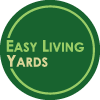
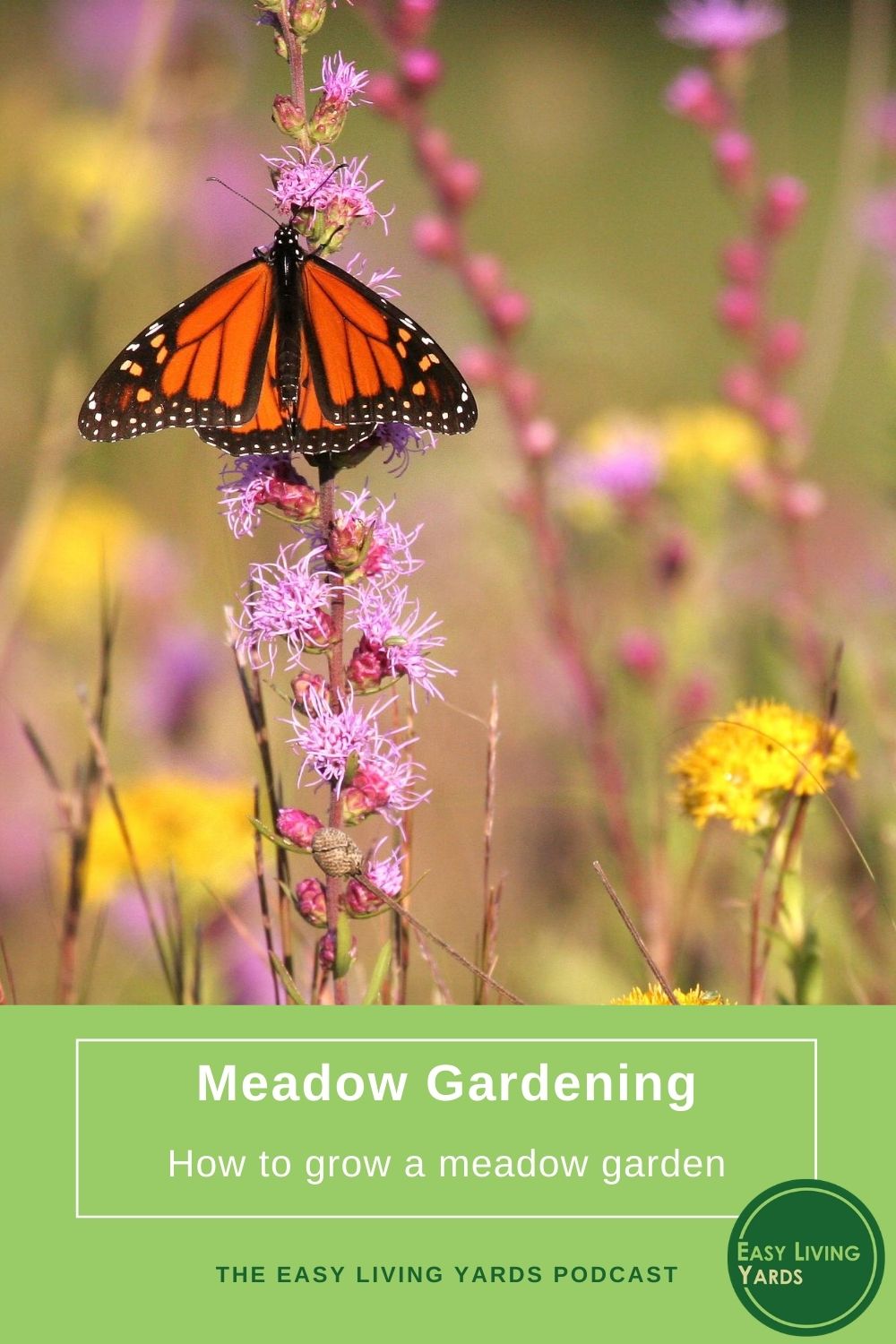
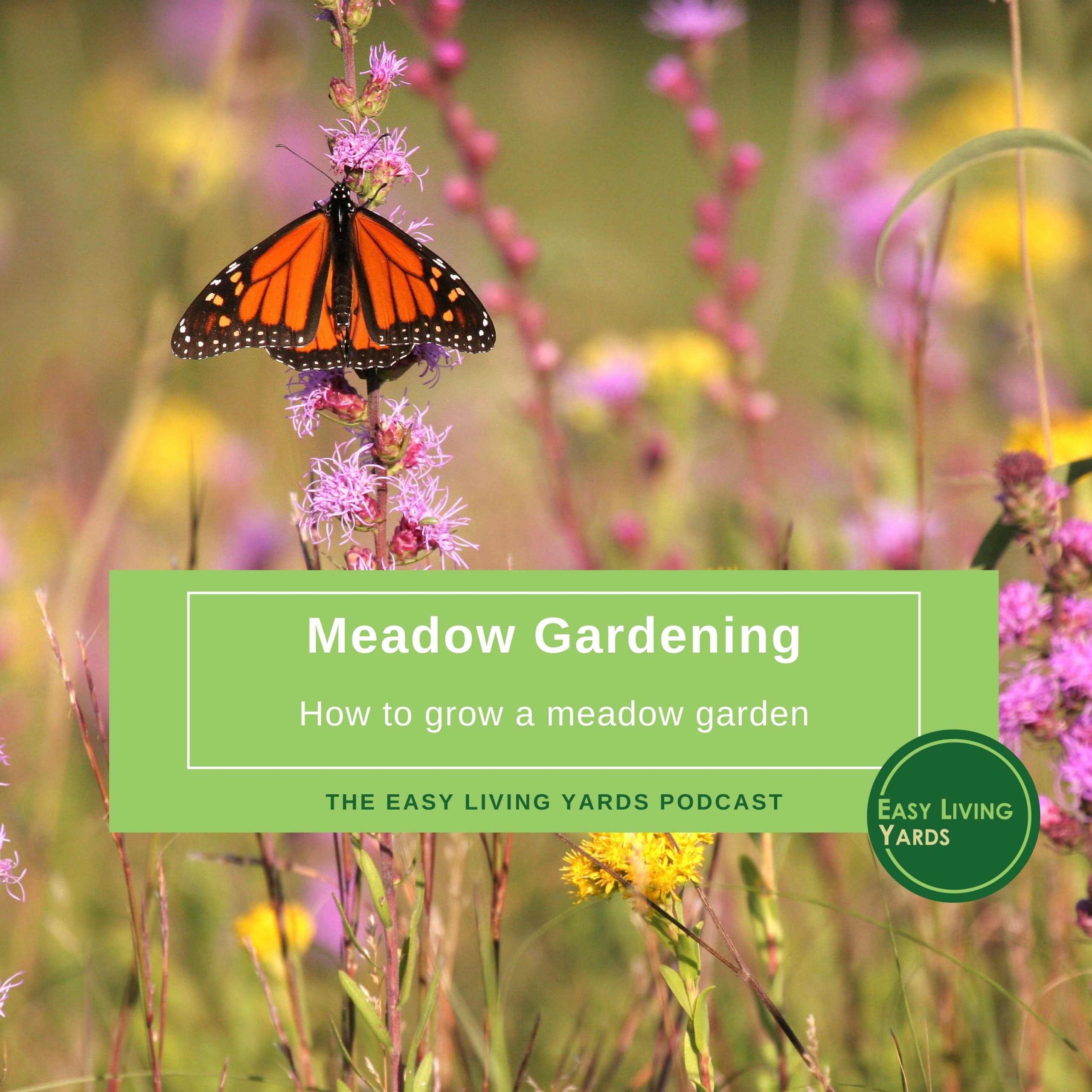
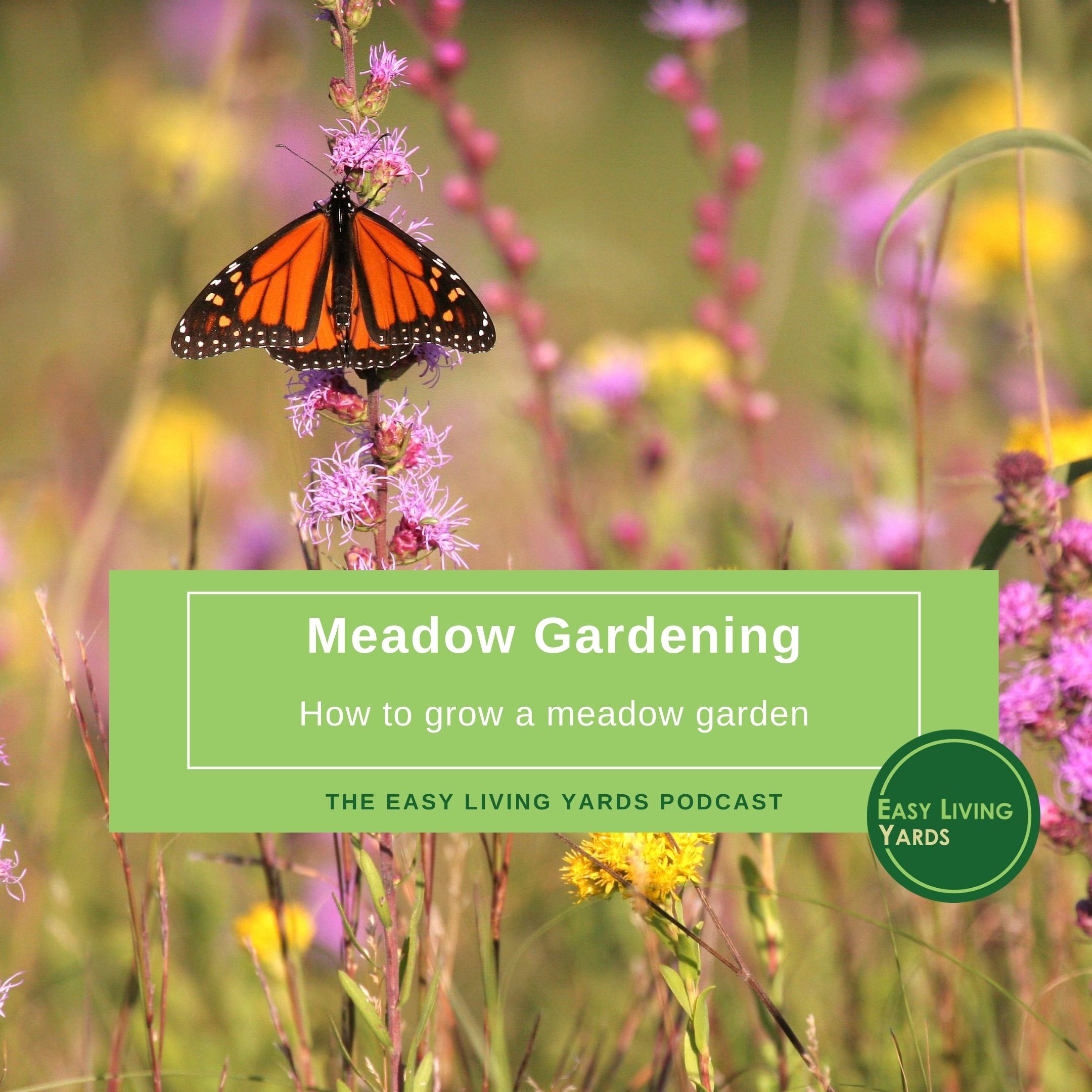
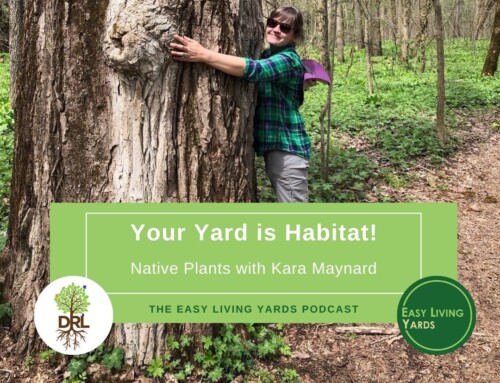

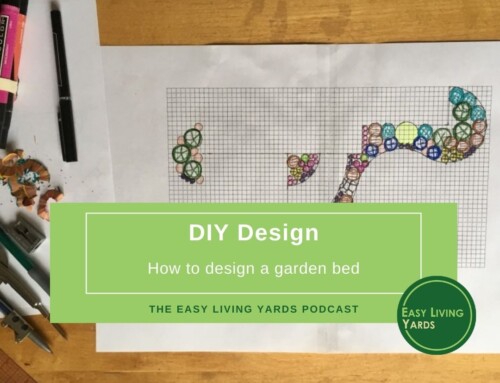

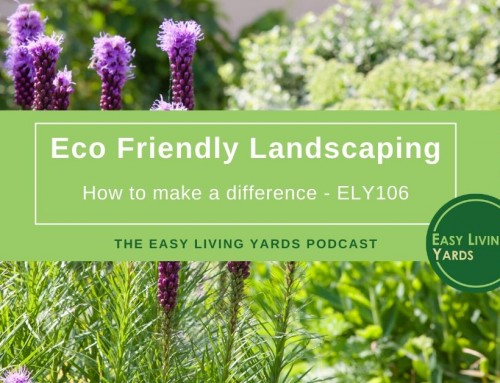
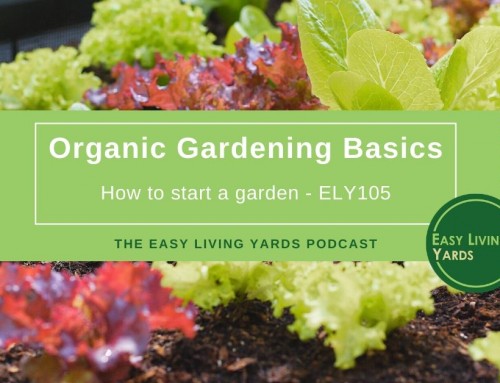
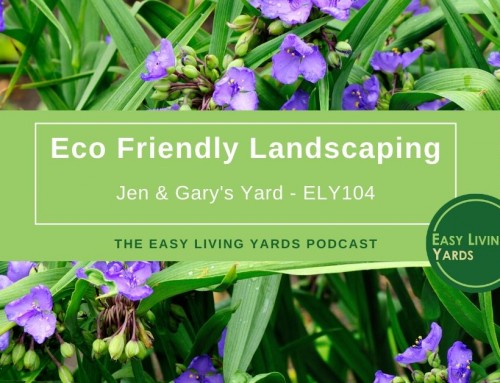
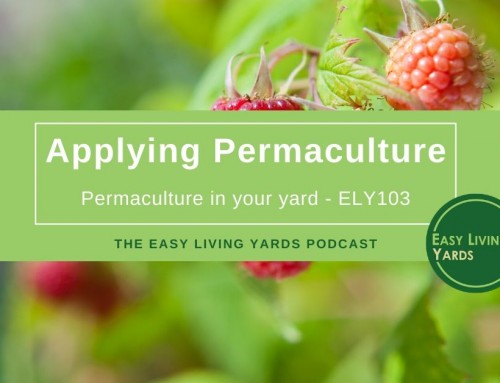
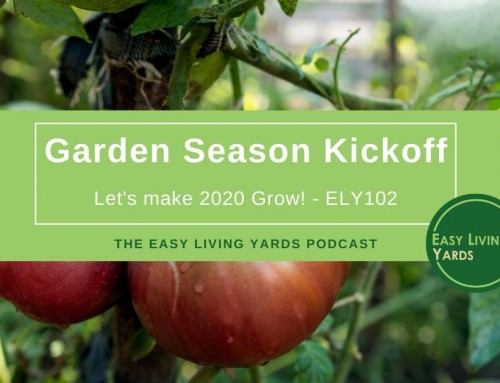
This Prairie Gardening post is excellent, and as a landscaping lover, this post is perfect for me. The details of this project will help me with my project, and that’s important for me.